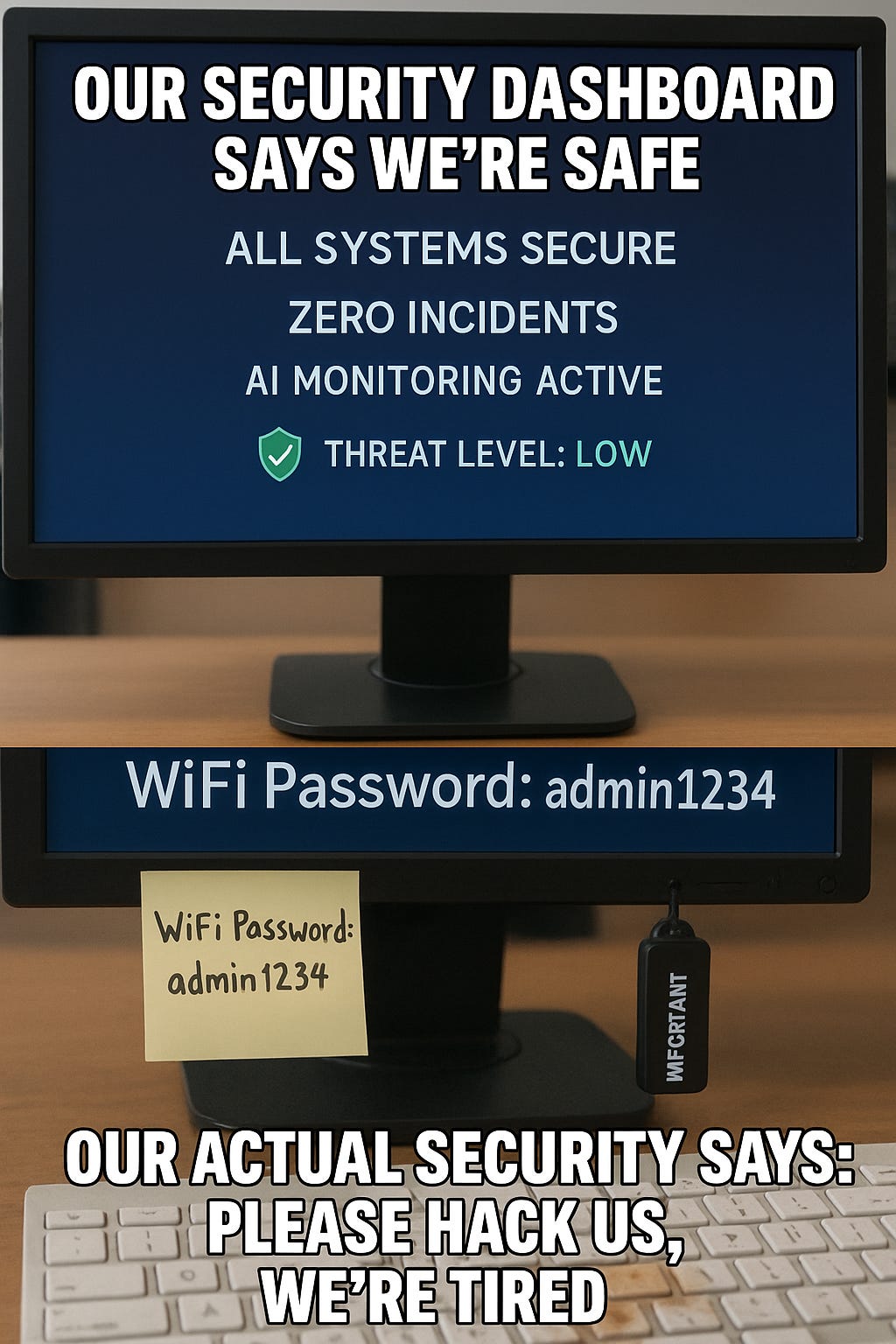The Mirage of Cloud Safety
It was supposed to be easier. That’s what the pitch decks promised. The marketing spoke of security as an outcome, not a process.
Move to the cloud, they said.
It’ll be safer than what you’ve got, they said.
And so, an entire generation of CIOs, CISOs, and board members nodded along, lulled into the false confidence of clean dashboards, green compliance checkmarks, and glossy reports boasting zero incidents.
But security isn’t failing because of the cloud. Security is failing because of the assumptions people brought with them when they moved into it.
Thesis: Cloud security hasn’t failed. Our assumptions about it have.
A Brief History of Our Cloud Delusions
Timeline: 2006 – 2025
The rise of cloud computing is the story of convenience dressed as innovation. From AWS’s launch to the SaaS explosion, the industry narrative quickly pivoted from “efficient” to “safe.” Security was rebranded as something inherent to the platform itself.
By 2010, early adopters weren’t asking if cloud was secure; they were assuming it was. That assumption metastasized into architecture. And by the time organizations realized cloud migrations created sprawling, fragmented ecosystems, the genie wasn’t going back in the data center.
Case Study: Capital One (2019)
Misconfigured AWS environment exploited by a former insider.
100 million customers affected.
Lesson: Technology doesn’t compensate for architectural laziness or internal vulnerabilities.
Key Insight: Cloud didn’t fail Capital One. Capital One failed Capital One.
Shared Responsibility — The World’s Worst Group Project
Timeline: 2010 – 2025
Cloud providers are explicit about their shared responsibility model. They own the infrastructure. You own the data, configurations, and identity controls. Yet somewhere between the PowerPoint and the procurement cycle, shared responsibility became shared denial.
Security teams thought it was IT’s job. IT thought it was the cloud provider’s. Leadership thought it was already solved.
Case Study: Uber (2022)
Hacker exploited MFA fatigue, gained broad access.
Poor internal segmentation and over-privileged accounts amplified the breach.
Lesson: Cloud isn’t a fortress; it’s a mirror reflecting organizational dysfunction.
Key Insight: Shared responsibility does not equal shared accountability.
Chapter 3: The Real Attack Surface — Human Behavior
Timeline: Always
Humans don’t operate like systems. They operate under pressure, fatigue, and flawed incentives. Over-permissioning, shortcutting controls, and trusting vendors too readily are predictable, repeated behaviors.
Case Study: Toyota (2023)
Public GitHub repo exposed sensitive API keys.
Developers unintentionally broadened attack surface through poor hygiene.
Lesson: It’s not malicious insiders. It’s ordinary people doing ordinary things under extraordinary pressure.
Key Insight: Cloud isn’t inherently risky. People are habitually careless.
The Myth of Visibility
Timeline: The Age of Dashboards (2015 – Now)
The more dashboards, the more confidence. Or so the myth goes. But visibility isn’t clarity, and telemetry isn’t insight. SIEMs, CSPMs, and endless reporting loops create noise disguised as knowledge.
Case Study: Facebook (2019)
540 million records exposed on unsecured cloud servers.
Oversight lost in scale, not in technology.
Lesson: You can’t monitor what you’ve already ignored.
Key Insight: Green dashboards do not equal security.
The Shadow You Created — Rogue IT, Ghost Data, and API Sprawl
Timeline: SaaS Expansion Era (2015 – Now)
Productivity demands outpace governance. Shadow IT flourishes. APIs multiply. Credentials leak.
Forgotten SaaS tools become active vulnerabilities. Ghost data lives forever.
Case Study: Microsoft Power Apps (2021)
38 million records exposed through misconfigured apps.
Default settings led to broad exposure.
Lesson: Complexity breeds oversight.
Key Insight: If you don’t know it exists, you can’t secure it.
Breach by Design — The Organizational Physics of Failure
Timeline: Continuous
Breaches don’t happen when systems fail. They happen when cultures fail. When speed trumps security. When incentives prioritize delivery over diligence. When breaches are seen as IT problems, not business inevitabilities.
Key Insight: Cloud security failures aren’t technical. They’re cultural. And cultural debt compounds faster than technical debt.
Preparedness is a Verb, Not a Dashboard
Timeline: The Future, If You’re Paying Attention
Security isn’t a destination. It’s practice, iteration, and discomfort.
Prepared looks like this:
Assume breach.
Know your assets.
Monitor what you ignore.
Secure architecture, not apologies.
Train like it matters.
Document when assumptions fail.
Stop Blaming the Cloud
Cloud security isn’t broken. Complacency is. The next breach won’t come from AWS, Azure, or Google. It’ll come from the gaps between your assumptions and your actions.
Final Thought: Stop asking if the cloud is secure. Start asking if you’re mature enough to use it securely.
#Cybersecurity #CloudSecurity #RiskManagement #SharedResponsibility #HumanRisk #ZeroTrust #SecurityCulture #CloudArchitecture #CISO #Leadership #Infosec #BehavioralSecurity #CloudGovernance #CyberAwareness #Accountability


